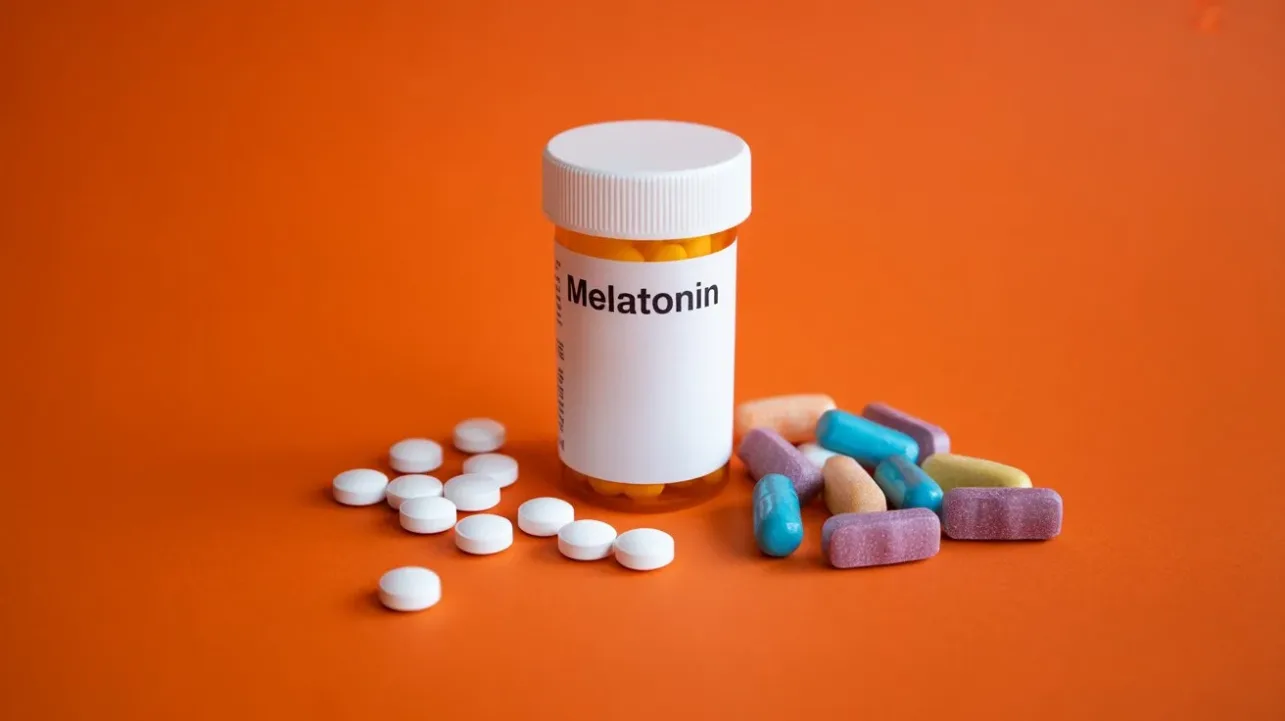The world’s two largest democracies are facing parallel reproductive health crises, with both the United States and India falling below the critical 2.1 replacement fertility rate needed to maintain stable populations. Health and Human Services Secretary Robert F. Kennedy Jr. brought urgent attention to this demographic emergency during a White House press conference on October 16, 2025, warning that declining male fertility and plummeting sperm counts represent a national security threat requiring immediate government action.
The United States currently reports a fertility rate of just 1.6 children per woman—down dramatically from 3.5 during the Kennedy administration—while India’s rate has fallen to 1.9, marking the first time rural India has touched replacement levels. Kennedy’s stark warning that American teenagers now have drastically reduced sperm counts and testosterone levels compared to previous generations reflects a global phenomenon affecting both nations, with scientists documenting a 51.6% decline in worldwide sperm counts between 1973 and 2018.
Scientific Evidence Confirms Male Fertility Crisis
Kennedy’s concerns are substantiated by landmark peer-reviewed research published in Human Reproduction Update, which found that sperm count decline has accelerated dramatically after 2000—dropping at 2.64% per year compared to 1.16% in earlier decades. The meta-analysis, examining data from men across all continents, concluded that “this substantial and persistent decline is now recognized as a significant public health concern”.
“Research on the causes of this continuing decline and an immediate focused response to prevent further disruption of male reproductive health are needed,” the researchers wrote, calling on “governments to acknowledge decreased male fertility as a major public health problem“. Kennedy emphasized during his announcement that male reproductive health metrics have deteriorated to alarming levels, attributing these changes to environmental exposures and endocrine-disrupting chemicals present in food, plastics, and consumer products.
The health secretary’s focus on chemical exposures aligns with extensive scientific literature documenting that endocrine-disrupting chemicals (EDCs)—including phthalates, bisphenol A (BPA), dioxins, and pesticides—significantly impact human fertility at multiple physiological levels. Studies show these ubiquitous compounds alter ovulation, damage egg and sperm quality, disrupt hormone production, cause oxidative stress in reproductive tissues, and induce DNA damage.
Trump Administration Announces Historic IVF Initiative
The October 16 announcement centered on a groundbreaking agreement between the Trump administration and pharmaceutical company EMD Serono to provide steep discounts on critical IVF medications through a new platform, TrumpRx.gov, launching in January 2026. The deal offers an 84% discount on three essential fertility drugs—Gonal-F, Ovidrel, and Cetrotide—which typically cost around $5,000 per IVF cycle.
Low- and middle-income women with household incomes below 550% of the federal poverty level will receive even more substantial discounts, with the Centers for Medicare and Medicaid Services estimating savings of up to $2,200 per cycle. “Parents who want to have children do not have access,” Kennedy stated, explaining the administration’s commitment to removing financial barriers preventing American families from pursuing fertility treatment.
President Trump positioned the initiative as fulfilling his campaign promise to support families and expand access to reproductive healthcare. The agreement represents the first major pharmaceutical pricing deal announced through the TrumpRx platform, demonstrating a broader commitment to lowering prescription drug costs for Americans struggling with infertility.
India Faces Identical Demographic Challenges
India’s fertility decline mirrors the American crisis with striking precision. According to the Sample Registration System (SRS) statistical report 2023, India’s national Total Fertility Rate (TFR) has fallen to 1.9 children per woman, with 18 states and union territories already below the 2.1 replacement level. Rural India reached the replacement rate of 2.1 for the first time in 2023, while urban areas reported a concerning 1.5 TFR.
Bihar records India’s highest fertility rate at 2.8, while Delhi reports the lowest at just 1.2 children per woman. Southern states including Kerala, Tamil Nadu, and Karnataka have already transitioned to below-replacement fertility, prompting political leaders to call for pro-natalist policies.
A Lancet study projects India’s fertility rate could plummet further to 1.29 by 2050, raising alarms about an aging population, potential labor shortages, and mounting healthcare and pension pressures. The UN Population Fund warned in June 2025 that India’s swift transition toward an aging demographic could decrease the ratio of working-age individuals and escalate fiscal burdens.
Indian Government Responds to Fertility Crisis
Indian political and religious leaders have begun addressing the demographic emergency with increasing urgency. Andhra Pradesh Chief Minister N. Chandrababu Naidu announced plans to introduce legislation incentivizing families to have more children, noting that southern states face the most acute demographic challenges.
Shamika Ravi, Member of the Economic Advisory Council to the Prime Minister, warned that “India must act before having only one child, or none at all, becomes a cultural norm.” She noted that India’s fertility decline is happening at a relatively lower per capita income level compared to other countries, making it exceptional
The declining fertility rate shows an inverse relationship with education and economic development—illiterate women in India report a TFR of 3.3, while literate women average just 1.8 children. This pattern mirrors global trends where urbanization, higher education levels, delayed marriage, career prioritization, and rising child-rearing costs contribute to smaller family sizes.
Endocrine Disruptors: The Hidden Threat
Kennedy’s emphasis on removing endocrine-disrupting chemicals from the American food supply and environment represents a science-based approach applicable to India’s fertility challenges. Research published in Frontiers in Public Health and other leading journals confirms that EDCs found in food containers, personal care products, cosmetics, and pesticides significantly impair reproductive function in both men and women.
“Exposure to these products has an impact on human reproductive health,” researchers noted, adding that “the association between exposure to EDCs and the development of potential and chronic diseases is a significant concern for public health, especially when fertility, a sign of health, is affected“. The Endocrine Society has confirmed that EDCs “change the neuroendocrine pathways fundamentally in reproductive health,” with research linking these chemicals to reduced fertility rates globally.
India’s agricultural sector’s heavy reliance on pesticides and the widespread use of plastic packaging in food distribution may contribute to environmental exposures similar to those Kennedy has targeted in American policy reform. Indian health authorities could benefit from adopting parallel regulatory approaches to limit EDC exposures in consumer products and food systems.
Make America Healthy Again Initiative
Kennedy’s fertility warnings form part of his comprehensive “Make America Healthy Again” (MAHA) agenda, which has achieved significant milestones since his confirmation as HHS Secretary. The MAHA Commission has outlined over 128 initiatives to address root causes of chronic illness and improve public health outcomes, with measurable early successes.
Major accomplishments include securing commitments from 35% of the American food industry—including major brands like Hershey and over 90% of U.S. ice cream manufacturers—to eliminate artificial dyes from their products. Kennedy announced plans to phase out all petroleum-based food dyes, including Red 40, Yellow 5, and Blue 1, by the end of 2026, citing links to negative health outcomes in children.
National Security Implications for Both Nations
“When my uncle was president, the fertility rate in this country was 3.5 percent. Today, it is 1.6 percent,” Kennedy stated, noting that America has fallen below the 2.1% replacement rate necessary to maintain population stability without immigration. He emphasized his personal commitment to family as a father of seven, describing parenthood as a divine blessing he wants all Americans to experience.
Both India and the United States face profound national security implications from below-replacement fertility rates. Declining working-age populations threaten economic productivity, tax revenues, and the sustainability of pension and healthcare systems. Military recruitment, innovation capacity, and geopolitical influence all depend on demographic vitality.
Kennedy’s framing of fertility as a national security issue resonates powerfully in India, where demographic dividend projections have long underpinned economic growth forecasts. If fertility rates continue declining to projected 2050 levels of 1.29, India may face the same demographic aging challenges currently confronting Japan, South Korea (1.12 TFR), and Italy (1.26 TFR).
Dual Approach: Prevention and Treatment
Kennedy’s comprehensive strategy combines regulatory reform to eliminate harmful environmental exposures with expanded access to fertility treatments for couples struggling with infertility. This dual approach addresses both prevention—removing endocrine disruptors and chemical exposures—and treatment, making IVF and assisted reproductive technologies affordable.
The October 16 announcement demonstrates the Trump administration’s commitment to addressing reproductive health as both a family values priority and a matter of national security, combining regulatory reform, industry partnerships, and healthcare affordability initiatives.
As the world’s two largest democracies confront parallel fertility crises, Kennedy’s urgent warnings and policy responses may offer a roadmap for reversing declining birth rates before demographic transitions become irreversible.




















